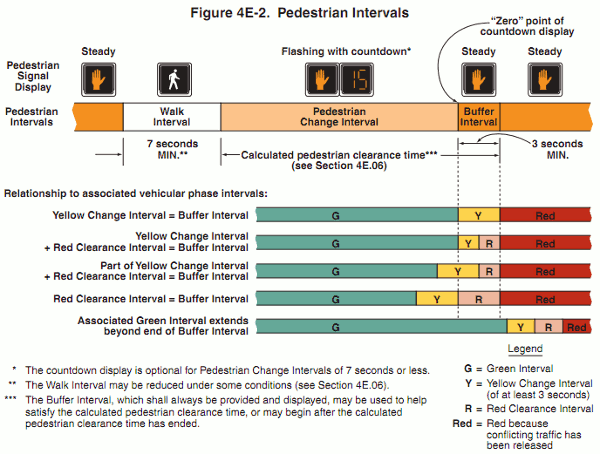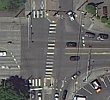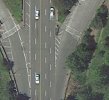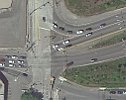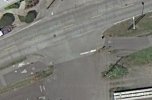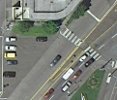Our earlier post about some Seattle crosswalk signals not meeting the federal standard has raised an interesting question. The post points out that most Seattle intersections start the flashing “don’t walk” signal using the old design standard based on a pedestrian crossing at 4 feet per second (fps). SDOT will be changing these signals over the next several years to meet the new standard of 3.5 fps to extend the pedestrian clearance time for people to cross in the pedestrian clearance interval once the “don’t walk” signal starts flashing.
However, a reader asked, is meeting the standard good enough? “This isn’t about ‘meeting the standard.’ Are we a pedestrian friendly city? If we are, let’s lead and prioritize pedestrian mobility.”
So, should signals in Seattle allow more time for pedestrians to cross once the don’t walk signal starts flashing by, for example, designing for a pedestrian traveling at 3 fps? The drawback to this would be that the walk signal (the only time during which a pedestrian can legally enter the intersection) would be shorter because the don’t walk signal would need to start flashing sooner. The good thing is that people who have started crossing would have even more time to get to the other side before cross-traffic starts moving. And, in reality, people would still cross the intersection after the don’t walk signal has started flashing and they would be given more time to get out of the intersection, though this change might increase the number of people who would be given a citation.
[poll id=”9″]
A better solution in my opinion would be for the countdown seconds to be displayed for the duration of the signal, so that even during the walk signal, people know how much time they have to get across. Unfortunately that is expressly against the MUTCD standard. Perhaps this is not recommended because it could give a conflicting message to people who are not used to seeing a walk signal with a countdown.
Anyway, what do you think?
